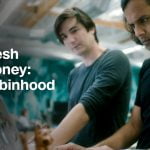The benefits of taking a vacation are no secret. Time off of work reduces stress, improves mental health and leaves employees feeling refreshed. Studies show that employees who take time off return to work feeling refreshed, recharged and ready to tackle problems creatively.
However, many Americans are hesitant to use all of their vacation time. According to a study by Glassdoor, Americans left half of their vacation days unused in 2016. Why are employees hesitant to take much-needed vacation time? Many employees worry about catching up at work after they return, and some may feel anxious about job security if they take a vacation.

Shutterstock
Encouraging employees to take vacation time is important to the success of every business. At GL group, a St. Louis-based provider of premier literature, we do our best to make sure our employees feel comfortable and encouraged to take time off. We offer 20 days of vacation/sick time as soon as a full-time employee is hired. In addition, in 2016 we added an additional benefit: Sandy Vacations. With our Sandy Vacation program, we award 10% of our employees a fully paid vacation — plus $500 spending money — every year.
Sandy Vacations is part of GL group’s larger goal of providing astounding benefits for our employees. These programs cost the company money. However, leaders who truly want to improve their employees’ work-life balance will recognize the value of engaged employees who feel like their employer cares.
We’ve given away 33 vacations in the past two years: a $165,000 total investment. Now, we could have spent that money on a lot of things, including employee development and nurturing. But spending that money on vacations — something that isn’t totally necessary — on the surface doesn’t seem to be an investment in the business at all.
A program like Sandy Vacations does not result in an easily measurable ROI. Instead, there is an emotional return in terms of our employees’ satisfaction and engagement in our business. What’s hard to measure here is the return we get on investing in what makes our employees happy. We’ve sent employees on trips that they might have never otherwise experienced. They’ve gone to Italy, Disney World, the Grand Canyon and the Caribbean.
Dedicating resources to improving employee engagement does have direct and measurable results. GL group has grown revenue on average of 10-15% per year. A study from Harvard Business Review found a correlation to companies with engaged employees and overall performance, saying, “Firms with high employee satisfaction outperform their peers by 2.3% to 3.8% per year in long-run stock returns — 89% to 184% cumulative — even after controlling for other factors that drive returns.”
Implementing phenomenal benefits starts from the top down. Owners must be willing to spend money on their employees’ health and well-being away from work. That money could always be spent on other things — including owners and leaders themselves. A program that dedicates funds to employee vacations and other benefits will not likely be a huge amount of money in the grand scheme of things for your company, but it has a huge amount of value for your people.
We’ve found that employees who are able to take a vacation come back to the office energized and bursting with creativity. They think about the bigger picture of the work they are doing.
Vacations are just one way you can do the right thing for your employees. If you’re interested in investing in a creative benefits program for your employees, listen to their needs. Do they need more time off? Do they want better wellness programs? Whatever they need, make sure you’re doing it for the right reasons. If your only driving factor is to see how much more productivity and time you can squeeze out of your employees after they enjoy a shiny new benefit, your people will see that you aren’t sincere about doing the right thing, and the program won’t work. You should offer superior benefits because you value your employees and want them to be happy. It might cost money, but it is an investment well worth it. In that way, we all win.
[“Source-forbes”]




